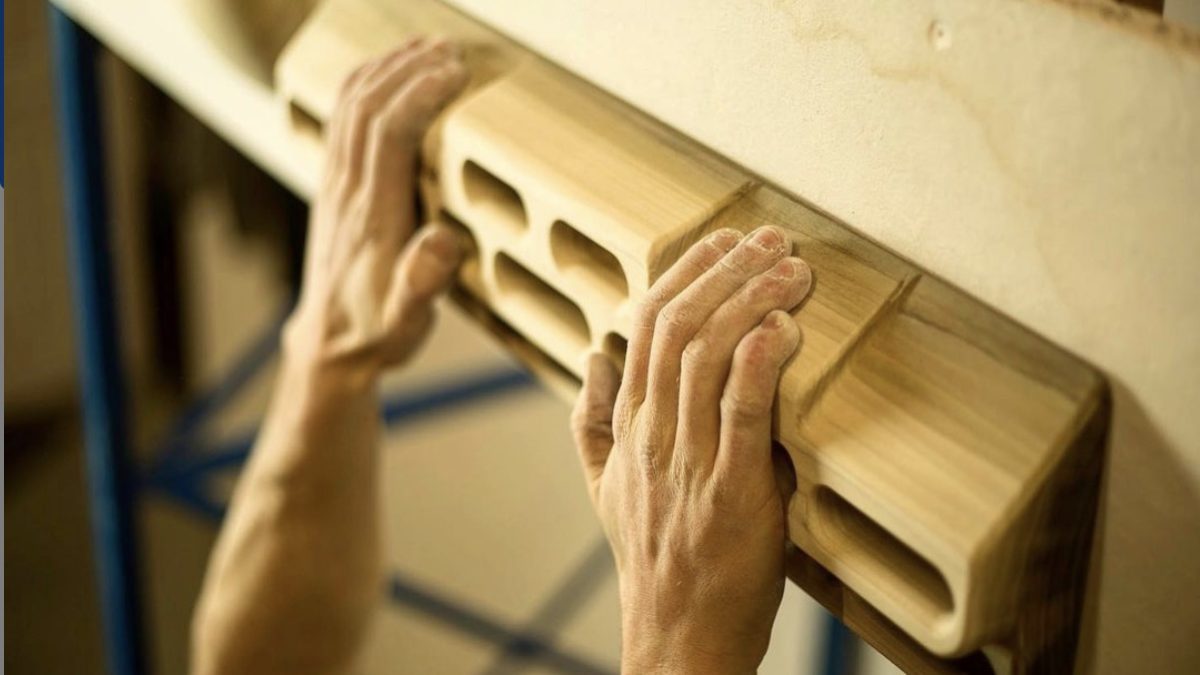How to Hang the Beastmaker 45-Degree Slopers
The Beastmaker 2000 is notorious for its ultra slick, low-profile slopers. Hanging them is easier than you might think

The Beastmaker 2000 is an industry benchmark. While most often applauded for its bottom edge, the notorious 45-degree slopers challenge all that try the hangboard for the first time. In some ways, it appears like a question of finger strength, but the physical hang remains elusive to many strong crimpers. How can we master this challenging benchmark?
While the 45 slopes might represent a poor edge, the flexion of the wrist differs from simple edge training. The ability to hang a six-millimetre grip does not denote strong Beastmaker ability. This suggests that sloper hangs relay on more than just finger strength. If it is not purely a function of tendon strength, then it might be suggested that musculature can aid in the hanging of these poor grips.
How might we train those muscles so that they can aid our fingers in hanging these desperate holds?
As with many of our training topics, these benchmarks prove elusive only the absence of consistency. We must begin with something easier. The gentle medium slopers provide a foundation from which we can grow. It is possible that simple isometrics will provide the necessary strength, but eccentrics are cited as best for building muscle while concentric exercises are cited for increasing strength. Isometrics are good for breaking through a plateau, but here we are presuming that finger strength is not our limiting factor. Reasonably the edge is massive, we just need to train our muscles to use it.
The sloper pull-up, despite its simplicity retains a concentric motion on the pull, an eccentric motion on the lower, a moment of isometric strain in retaining grip at the bottom end of the pull up. The tightening of the core to stay in the grip represents one of the more fundamental aspects of the exercise, but if we want to use this exercise for climbing, we must consider the sloper in motion.
The exercise:
- Aim to complete 10 sets of 10 full range of motion pull ups on the medium slopers of the Beastmaker 2000.
- If you are unable, then complete in as many sets as needed to make 100.
- Complete the exercise three times a week, with each day separated by at least one rest day
When you are able to complete 10 sets of 10, begin trying to hang the 45-degree slopers. There are at least three ways to hold the 45 slopes. The first is to place all three finger pads of all four fingers on the sloper. The second is to almost crimp the sloper while maintaining a mostly open grip. The third is to maintain an extended pointer finger and crimp with the middle two fingers.
You will likely find one that works best for you. Oscillate between the grips between attempts. The first time you hang the sloper, you will learn that it is possible. That realization may inspire you to find a more efficient grip position.
The Gripped editor found it took two weeks of pull ups on the medium slopers before he could hang the 45-degree slopers. Once you are able to hang these holds, begin the second stage of training: mastery. Although hanging the 45 slopes may have been your goal, it is worth aiming to replicate the 10 sets of 10 you completed on the medium slopers. It will be much harder on the 45-degree slopes.
The large surface area of the grips makes pull ups relatively gentle for your fingers. By comparison, pull ups on the 14-millimetre grips are more aggressive. This is because you are in an almost open-handed position.
As the exercise is to train for the physical style of sloper-based climbing, attaining a high level of power-endurance on the 45 slopes can have benefits. Still, this may not be the best training for your sloper-based project. Many slopers are filled with nuances that strong crimping finger may overcome. To that effect, sloper-based climbing, while physical, is generally in the hips. It is technical.
The editor doubts that 10 sets of 10 pull ups on the 45-slopes are necessary to be physically proficient in the sloper-based movement. With that said, it provides a level of strength that will not require much maintenance once achieved. Still, few climbers need to complete pull ups. Climbing is more complicated than pull up proficiency, especially at the higher difficulties.
View this as a training tool paired with an exercise that provides mastery of a grip type. Just because you can hang on a small edge does not mean you will be strong on all crimpy boulders. Instead, it is a step toward greater proficiency best exercised through the mastering of a technique.
Featured image from Beastmaker by Nick Brown.


